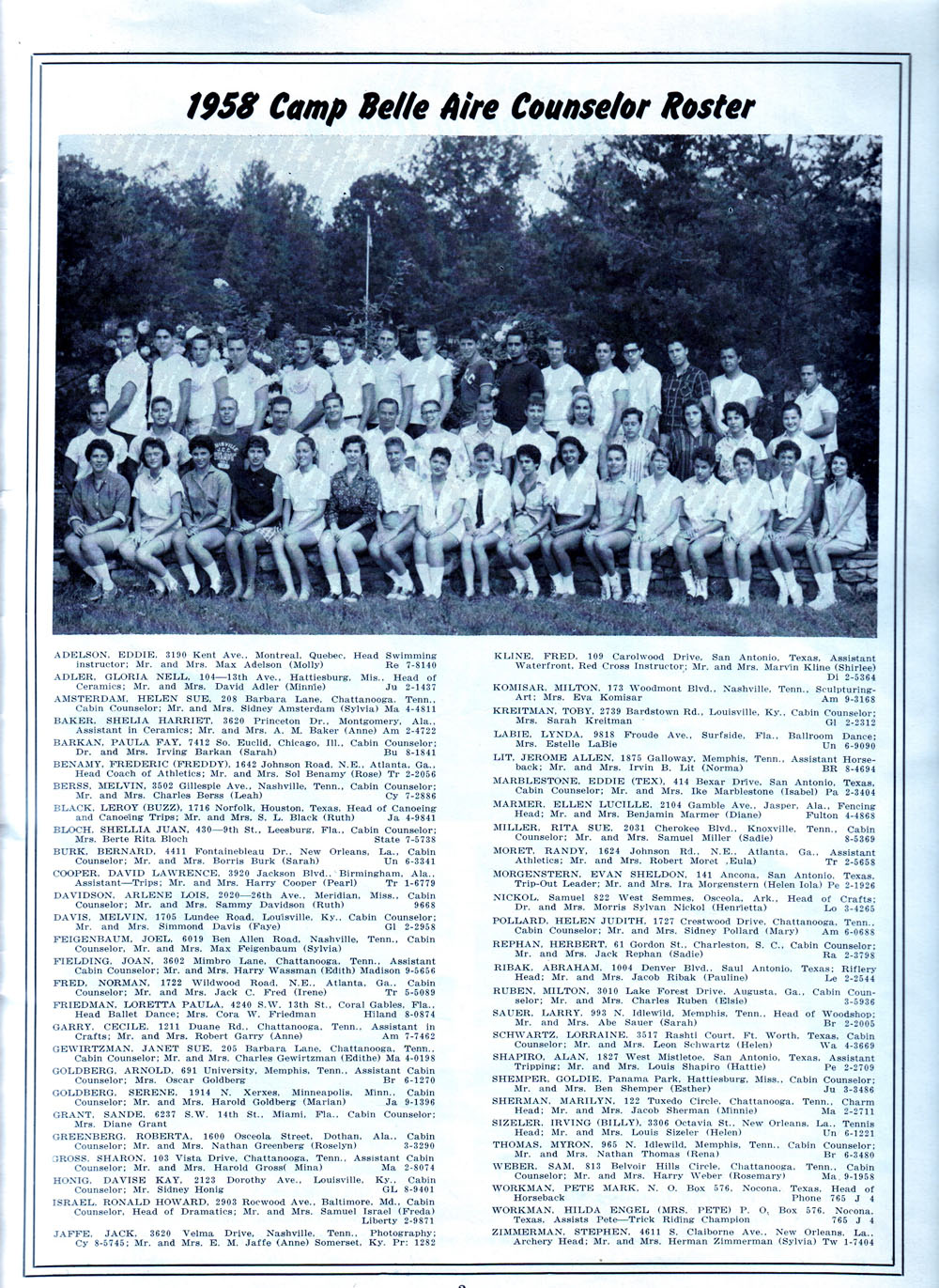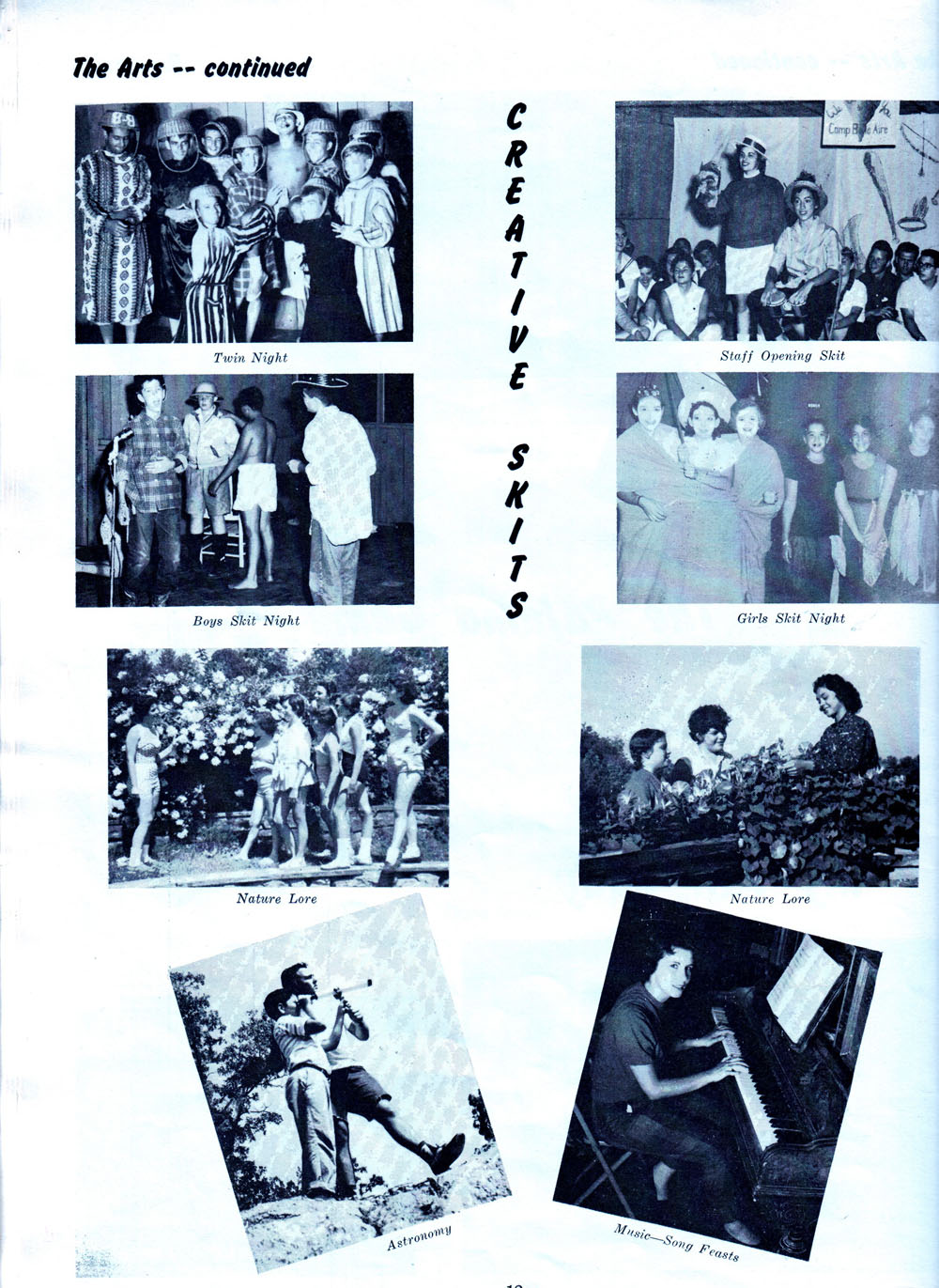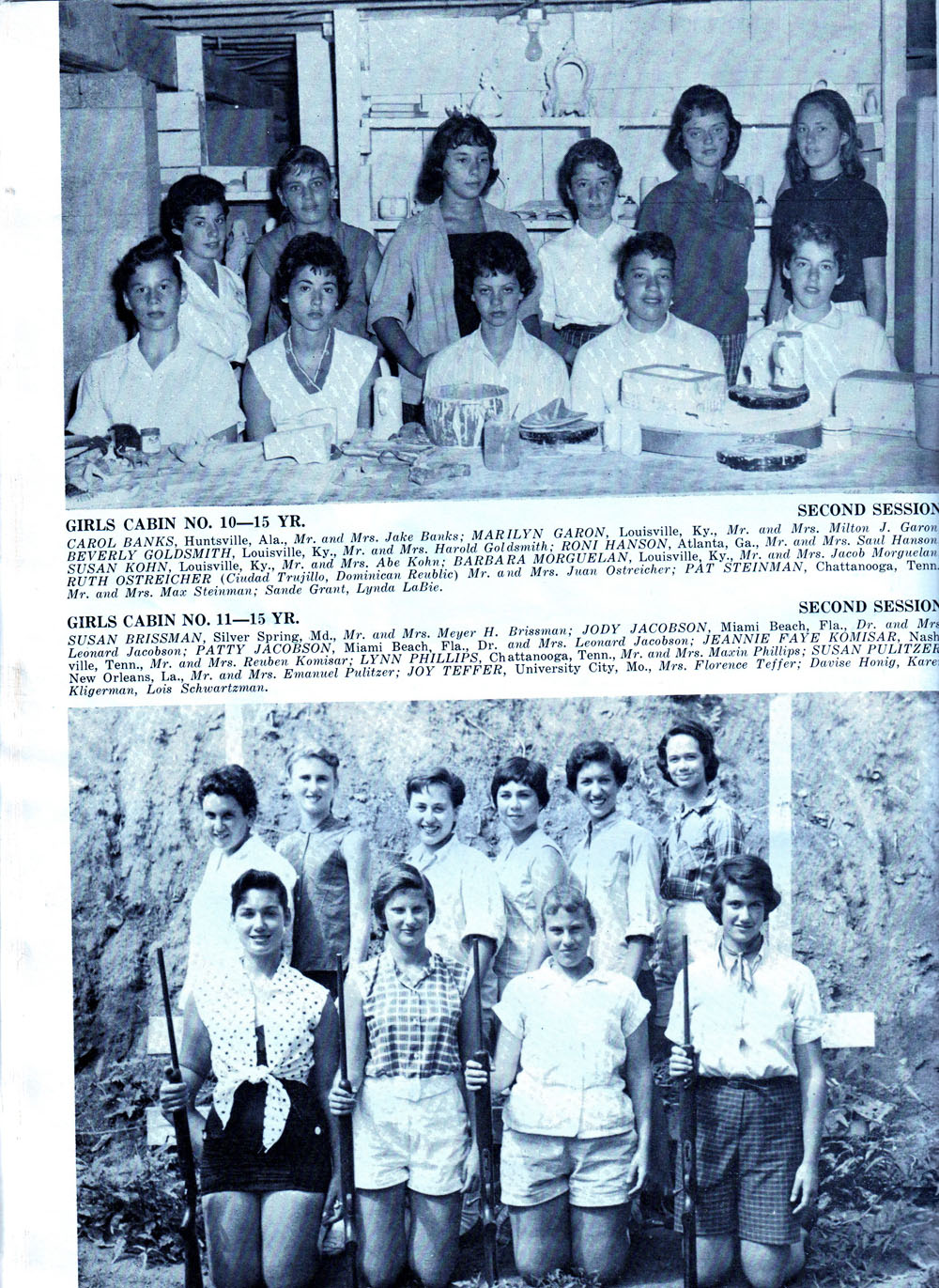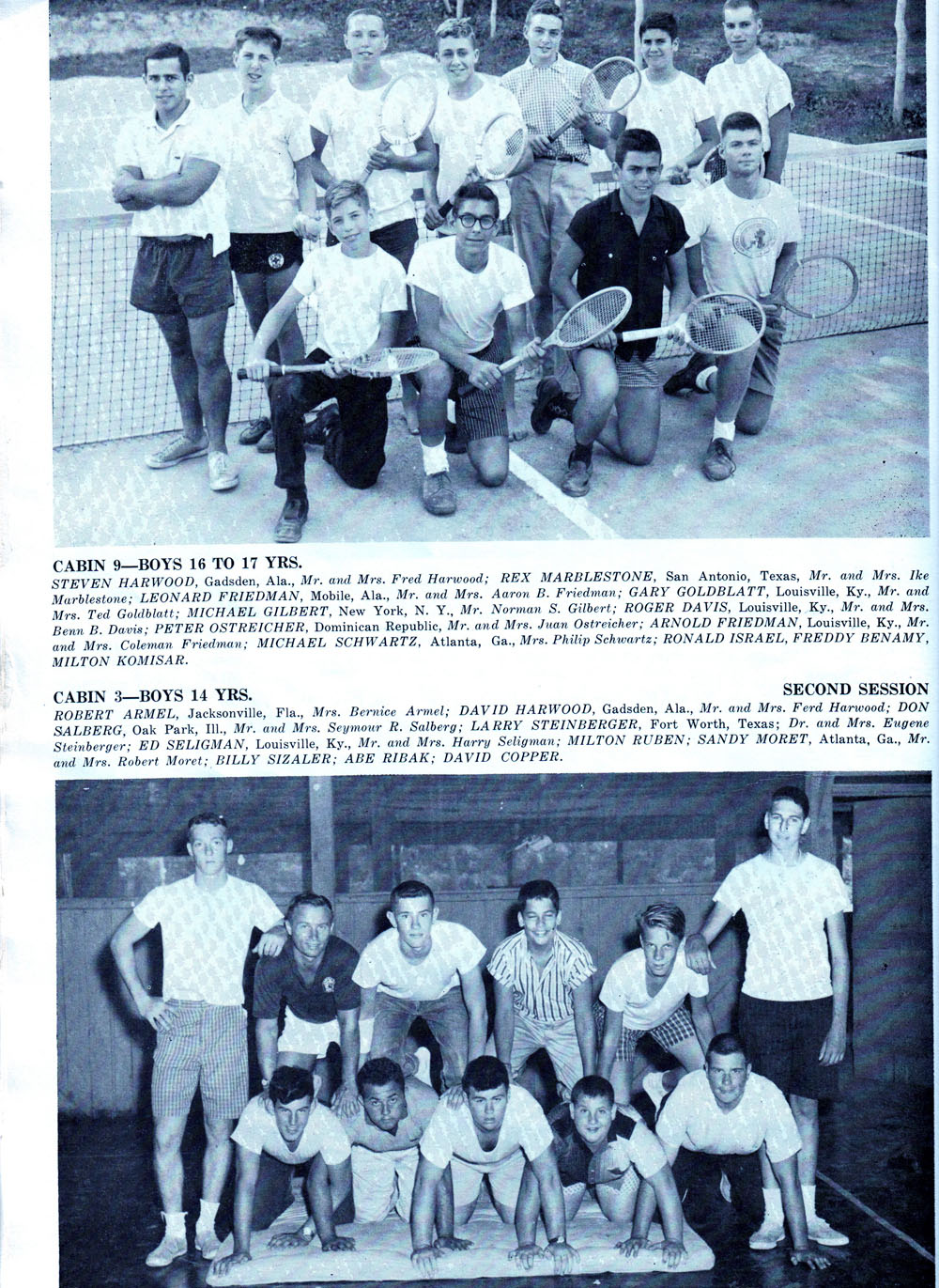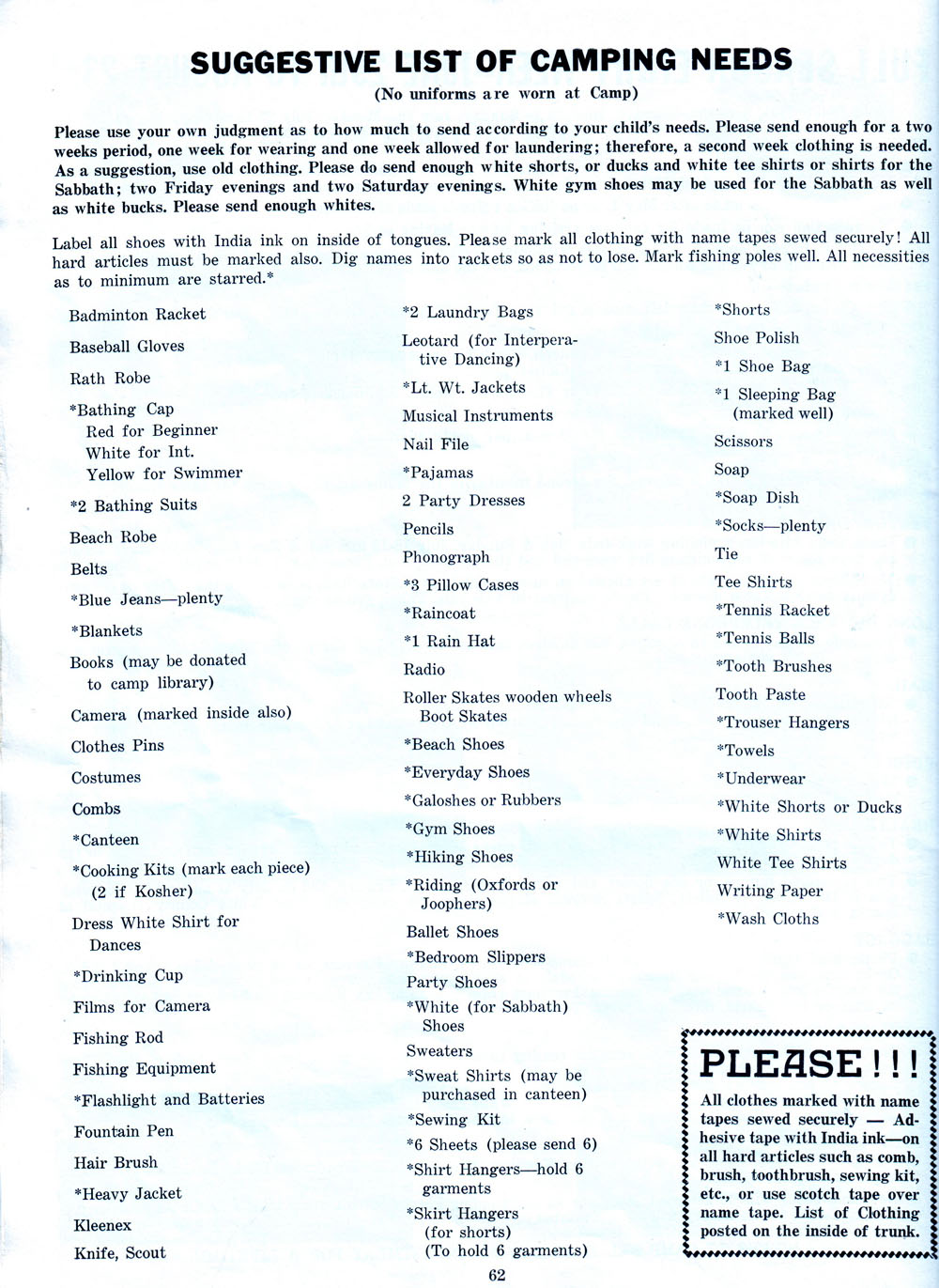Camp Belle Aire
A large lake was constructed on Bon Air Mountain during the 1920s. At that time, there were no bulldozers and backhoes. Instead, a method called “mule and pond scoop” was used to build the lake. The lake was initially called Lake Shoshanna but later came to be more commonly referred to as Camp Belle Aire Lake.
Cabins were moved to the lake area from Scott’s Gulf and additional cabins were constructed. It eventually grew into a large summer camp accommodating approximately 200 campers. E. L. Spain of Nashville, who had been the secretary of the Nashville Y.W.C.A., was hired to supervise the camp. The camp became know as Camp Bon Air.
Initially, the camp was used to provide Vanderbilt University students a place to practice their surveying skills in the summer. In 1931, Vanderbilt University purchased 50 acres of land near Bon Air where the summer homes of W. J. Cummins and Frederick Leake, executive officers of the Tennessee Products Cooperation, were located. That location became the Vanderbilt University School of Engineering Surveying Camp.
After Vanderbilt University moved it’s surveying camp, Camp Bon Aire served as a Girls Camp. Campers attending Camp Bon Aire came from all over the United States and at times from other countries. As time went by and ownership changed, the camp closed for a time in the 40’s and later reopened.
Bea Komisar, wife of Reuben Komisar of Nashville, agreed to move to White County to operate Camp Bon Aire in 1950 as a favor to friends, Alfred and Ralph Jaffee, who had been drafted and transferred their interest in Camp Bon Aire to Bea. Bea continued operating the ranch as a hobby. When Ralph Jaffee died, his obituary stated that it was his true passion and desire to own and operate a summer camp for children of the Jewish faith.
In 1953, Bea and her husband, Rueben, bought the Camp Bon Air property from Tom Sneed. By this time, the Camp Bon Aire property totaled approximately 300 acres. Bea and Rueben changed the camp’s name to “Camp Belle Air”. The camp was complete with a boy’s and girl’s area with thirteen cabins for each and a bath house for each. There was a dining hall, a canteen, infirmary, music library, recreation room for movies, a post office, a regulation sized gym and a laundry house. Outdoor areas included six tennis courts, a roller-skating rink, volleyball court, badminton court, two shuffleboard courts, a trampoline, a hopscotch court, a professional boxing ring, weight lifting equipment, an outdoor bowling court and a baseball diamond. Other outside recreational activities were available on Lake Shoshana with its sandy beach where campers could fish and swim. In addition, there was a canoe house complete with 12 canoes and 2 sailboats, a ski house and ski boats.
The camp also offered art, ceramic and craft classes, a charm school for girls, drama, dancing and music classes. The camp published its own newspaper. There was a wood shop and archery house, a riflery house, a fencing house and a golf house. There was also an amphitheater. A Dude Ranch where campers received instruction in equitation, roping and cowboy stunts were offered beginning in 1959.
Campers were required to go to the infirmary as soon as they arrived for a physical check-up with the camp physician and camp nurse. Campers were not allowed to bring comic books to camp. There were too many activities offered for campers to have time to be a “couch potato”!
The camp offered an eight-week session for $550 and a four-week session for $325. The fee did not include the cost of arts, crafts, ceramic materials, medals and field trips away from the campgrounds. It did not include canteen money. Campers were required to write home at least three times a week and parents were encouraged to write the children as often as possible.
In the 1950s, this was “the” place to spend the summer. Something, however, has been lost through time because no one seems to know what happened to the camp. Today, Camp Belle Aire is a quiet, secluded residential area on Bon Air Mountain. Bea and Reuben Komisar moved on and opened the Sunset Rock Dude Ranch in 1961 on a parcel of land that was formerly part of the Vanderbilt surveying camp on the bluff adjacent to US Highway 70 overlooking the scenic view of White County below.
1959 Camp Belle AirE Annual
(Note: Various historic accounts of Camp Belle Aire offer sometimes conflicting information about the history of the camp. There are also few original photos of the camp available for posting on the website. Any additional information that might add to the historical accuracy and also any additional photos that viewers might be able to provide to the Bon Air Mountain Historical Society would be welcome. Feel free to help provide additional information for this page by notifying us through the “Contact Us” page on the website.)
My Remembrances of Camp Belle Air in 1957
By Matthew Kinnard, Washington, DC, August, 2019
I graduated from Tennessee State University (TSU) in May 1957 with a major in Biology. As an honor student, I was scheduled to enter Marquette University in the fall of 1957 as a graduate student with the support of a Marquette University teaching assistantship. As an African American youth in Nashville in 1957, employment was scarce to non-existent. My older brother Arthur Jr. and I after many failed attempts to locate meaningful employment in Nashville during the summer of 1957, were hired by Reuben and Bea Komisar to work as servers for the campers enrolled at Camp belle Air that summer. There were four or five other African American males serving in the same capacity. The Komisars had a son named Marty and I recall also a daughter whose name i do not recall. There were two Native American Indian tribes consisting of approximately half the camp's enrollment each having a chief at the camp that summer. The tribes were Cherokee and Chocktaw and indian friendly war was waged between the two tribes all summer long. Points were given the two tribes for achievement of basic camp skills by the members of the two tribes. At the end of the summer the points were summed up and whichever tribe had acccumulated the most points was declared the winner of Indian War. I do not recall who won but it was an exciting summer even though our pay was minimal. Among the most cherished memories of my Camp Belle Air experience was being given the remaining wine on Friday evening following the celebration of the beginning of the Jewish sabbath each weekend. That wine tasted very good after a hard week's work. If memory serves me well, Mr. Ike Marblestone was the overall camp administrator in charge of the camp activities. One of the camp's counselors was Robert (Bob) Guirwitz who was a Texas Longhorn football player and was a very friendly person. That is mostly what I recall about Camp Belle Air. Although I never entered graduate school at Marquette, after earning a masters degree at TSU and after a three year hitch in the US Army and a few more years employment at NIH, I eventually earned a Ph.D. in Neurophysiology from Georgetown University in Washington, D.C. and currently reside in the DC suburbs.





